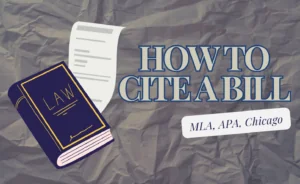Citing a documentary is an important part of academic writing because when it’s done, the credit is given where it is due. Additionally, it provides a clear path for interested readers to research the sources. In this article, we’ll go over the mechanics of mentioning a documentary, including its nature, the most common citation styles (APA, MLA, and Chicago), and step-by-step directions for each.

✅ AI Essay Writer ✅ AI Detector ✅ Plagchecker ✅ Paraphraser
✅ Summarizer ✅ Citation Generator
What is a Documentary?
A documentary is a powerful form of visual storytelling that transcends mere entertainment, aiming to provide a factual account of real-life events, issues, or subjects. Unlike fictional films, documentaries are grounded in reality, often showcasing the world as it is or exploring significant aspects of human experiences. The key characteristics of documentaries include:
| Realism and Authenticity | Documentaries strive to capture the truth and authenticity of their subjects. Filmmakers present real people, events, and places, allowing audiences to engage with the raw and unscripted aspects of life. |
| Purpose and Message | Documentaries are purpose-driven, seeking to inform, educate, or advocate for a particular viewpoint or cause. They go beyond entertainment, addressing social, political, environmental, or historical issues to evoke thoughtful responses from viewers. |
| Various Forms and Styles | The documentary genre is diverse, with various sub-genres and styles, including observational, participatory, expository, and poetic documentaries. Each style employs different techniques to convey its message effectively. |
| Educational Tool | Documentaries are frequently used in education at all levels. They serve as valuable tools to enhance learning experiences by providing real-world examples, fostering critical thinking skills, and offering a global perspective on diverse topics. |
| Multilayered Nature | Documentaries can serve multiple purposes, including instruction, education, news reporting, and entertainment. This multifaceted nature makes them adaptable to different contexts and audiences. |
| Audiovisual Impact | Leveraging the combination of visuals, sound, interviews, and narratives, documentaries aim to create a powerful audiovisual impact. This format allows for a more immersive and engaging experience compared to traditional written sources. |
| Global Perspective | Documentaries play a crucial role in presenting a global perspective. They facilitate understanding across cultures, making them valuable tools in educational settings where students can explore and internalize trends worldwide. |
| Complementary Role in Education | While documentaries are potent tools for learning, they are seldom standalone instructional resources. Instead, they complement broader educational experiences, offering a dynamic and supplementary approach to traditional teaching methods. |
Understanding the nature of documentaries is essential, not only for appreciating their role in various fields but also for correctly citing them. Documentaries, as impactful sources of information and inspiration, contribute significantly to our collective understanding of the world.
APA, MLA, or Chicago: What are The Best Styles for Documentaries?
The American Psychological Association (APA), Modern Language Association (MLA), and Chicago styles are widely recognized in education. Each style has its own unique features, making it suitable for specific disciplines. APA is commonly used in the social sciences, MLA in the humanities, and Chicago in various fields, including history and the arts. These styles are particularly appropriate for citing documentaries due to their comprehensive guidelines.
How to Cite a Documentary
APA (American Psychological Association)
APA style is commonly employed in the social sciences, including psychology, sociology, and education. APA provides a concise and clear citation method, guaranteeing that critical elements like the director’s name, year, title, and production details are readily available to the reader. This style is appreciated for its straightforwardness and emphasis on the publication date.
For instance, the documentary National Geographic China’s Ghost Army Terracotta Warriors 2010 in APA will have the following format:

MLA (Modern Language Association)
MLA style is commonly used in the humanities, covering disciplines such as literature, philosophy, and the arts. MLA emphasizes the importance of the creator’s name and the title of the work. It is known for its focus on the authorship of a work and for providing a straightforward citation format.
The MLA format for citing a documentary follows this pattern:

Chicago Style
The Chicago Manual of Style offers two systems: the author-date system and the notes-bibliography system. The author-date system is commonly used in the sciences and social sciences, while the notes-bibliography system is prevalent in the arts, history, and literature.
In the notes-bibliography system, the format is as follows:

These citation styles, whether APA, MLA, or Chicago, ensure that the documentary’s details are presented consistently and comprehensively, allowing readers to trace and verify the sources with ease. Choosing the appropriate style depends on the academic discipline and the specific requirements of the assignment or publication.
Conclusion
Knowing how to cite a documentary is imperative for academic integrity. The nature of documentaries as informative and educational tools necessitates proper acknowledgment within the academic community. By using the APA, MLA, or Chicago citation styles, writers can make a standardized and clear presentation of documentary references in their work. Whether exploring the fascinating world of China’s Ghost Army or any other documentary, following these guidelines guarantees accurate and credible citations in your academic papers.
FAQ
Follow us on Reddit for more insights and updates.





Comments (0)
Welcome to A*Help comments!
We’re all about debate and discussion at A*Help.
We value the diverse opinions of users, so you may find points of view that you don’t agree with. And that’s cool. However, there are certain things we’re not OK with: attempts to manipulate our data in any way, for example, or the posting of discriminative, offensive, hateful, or disparaging material.